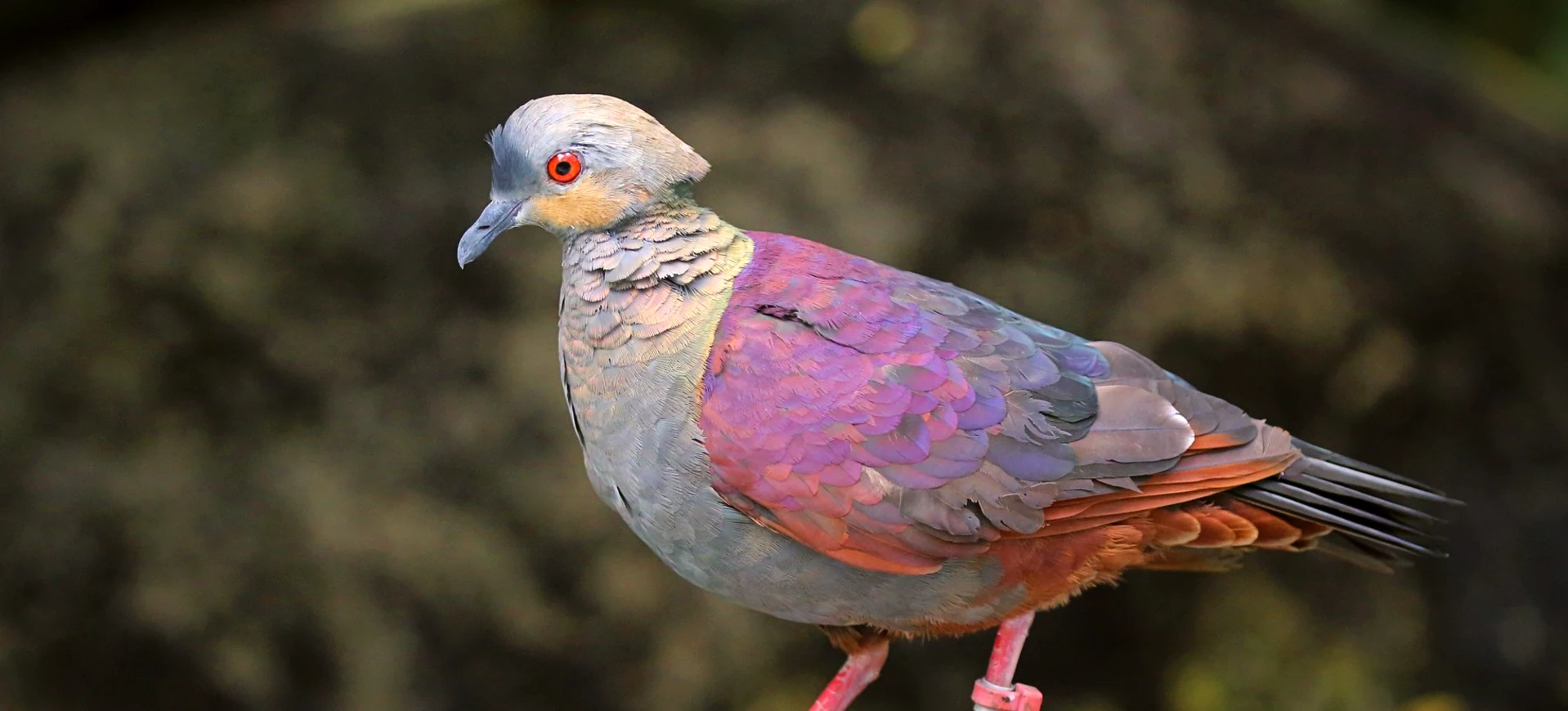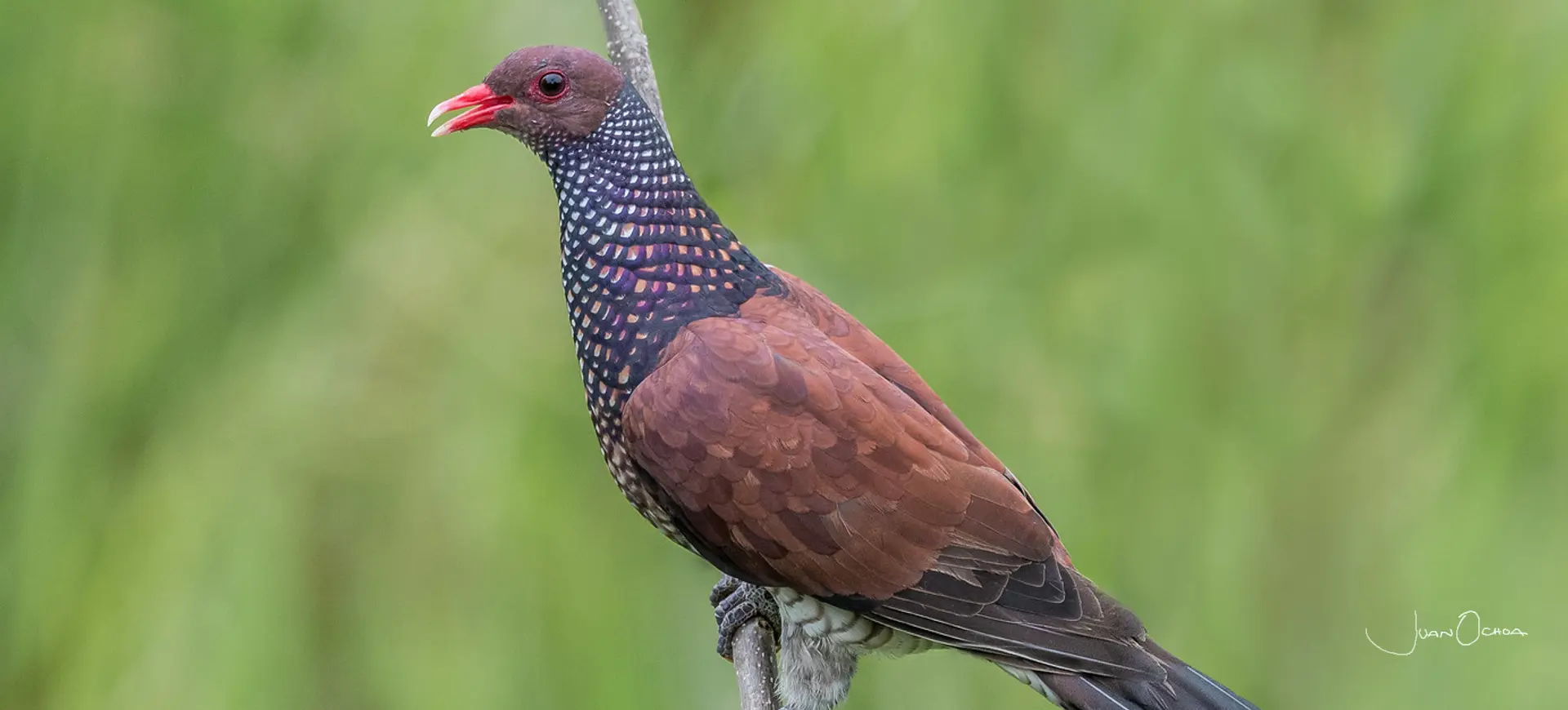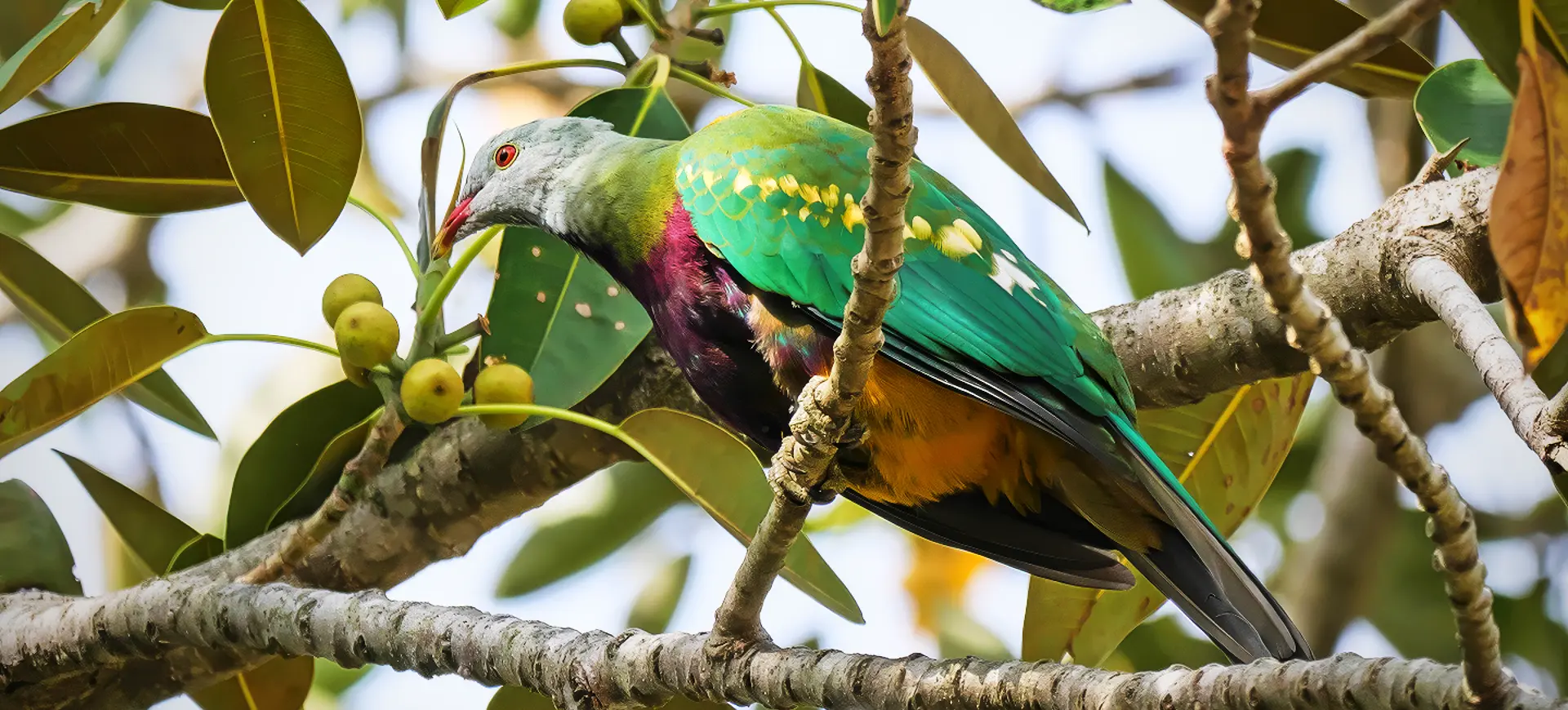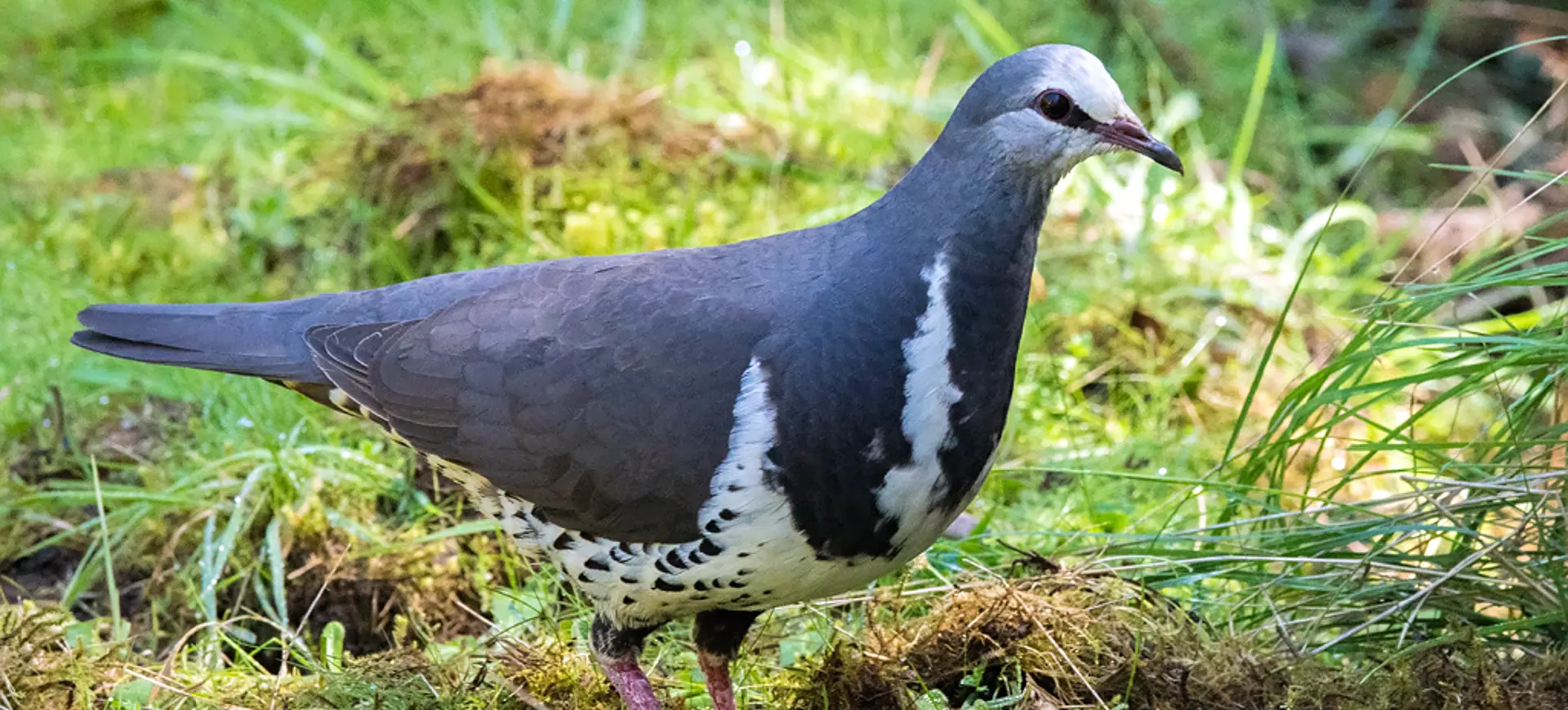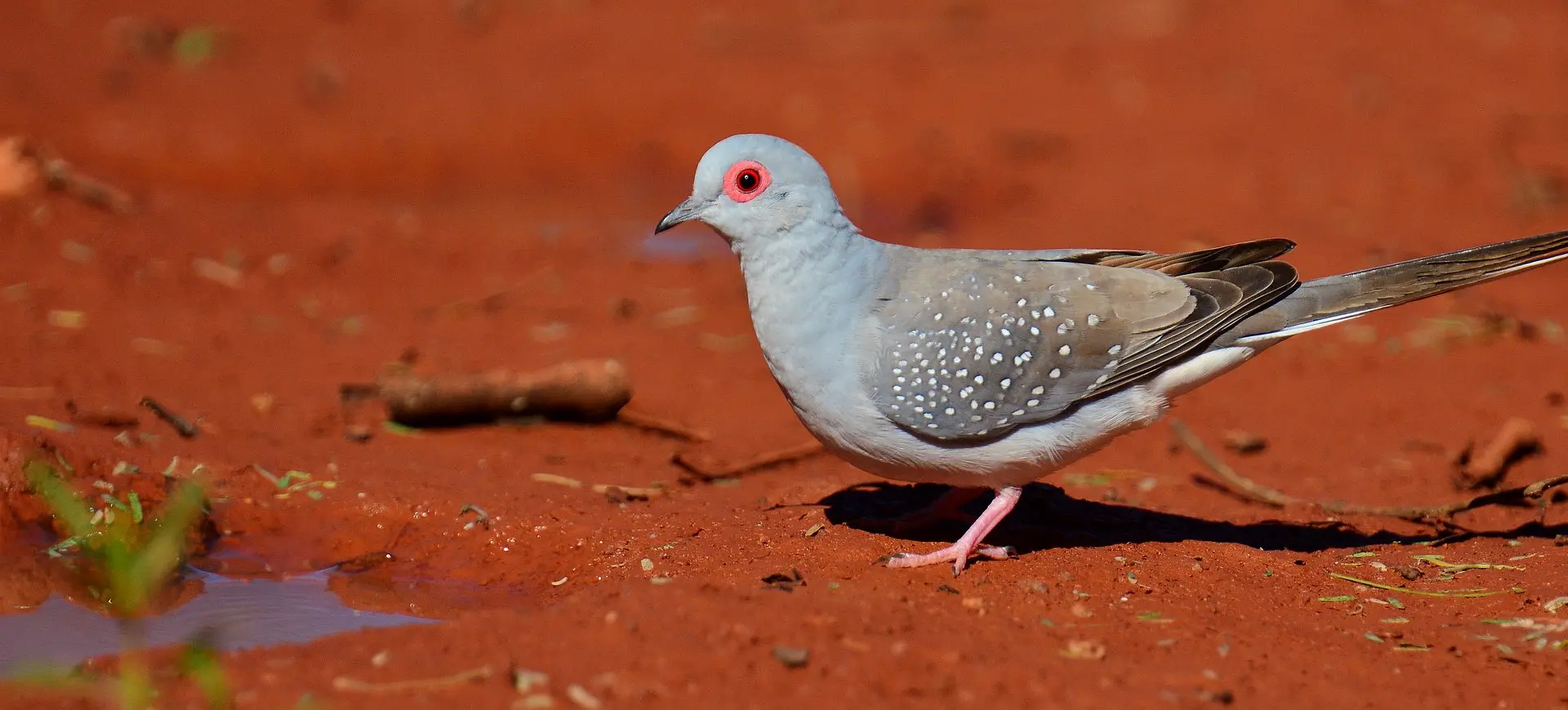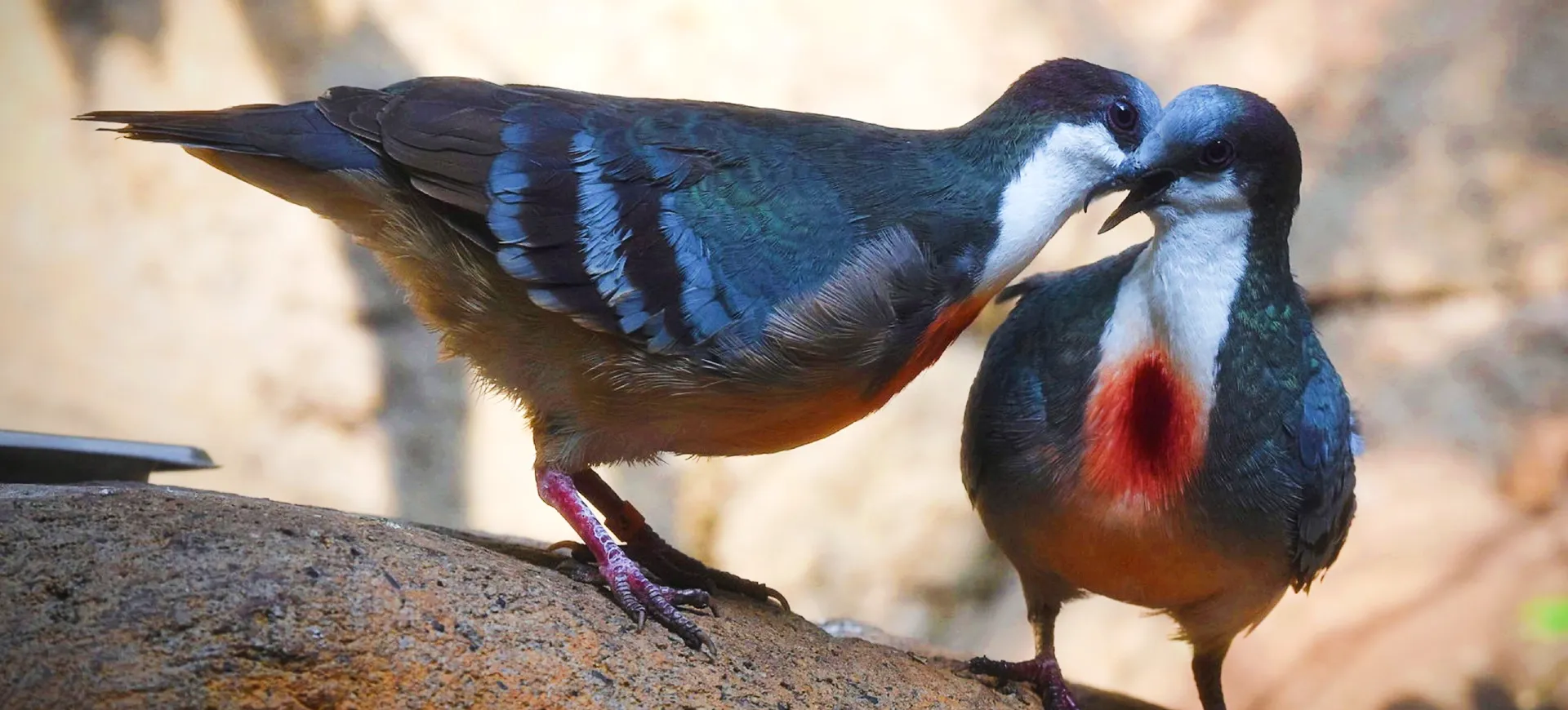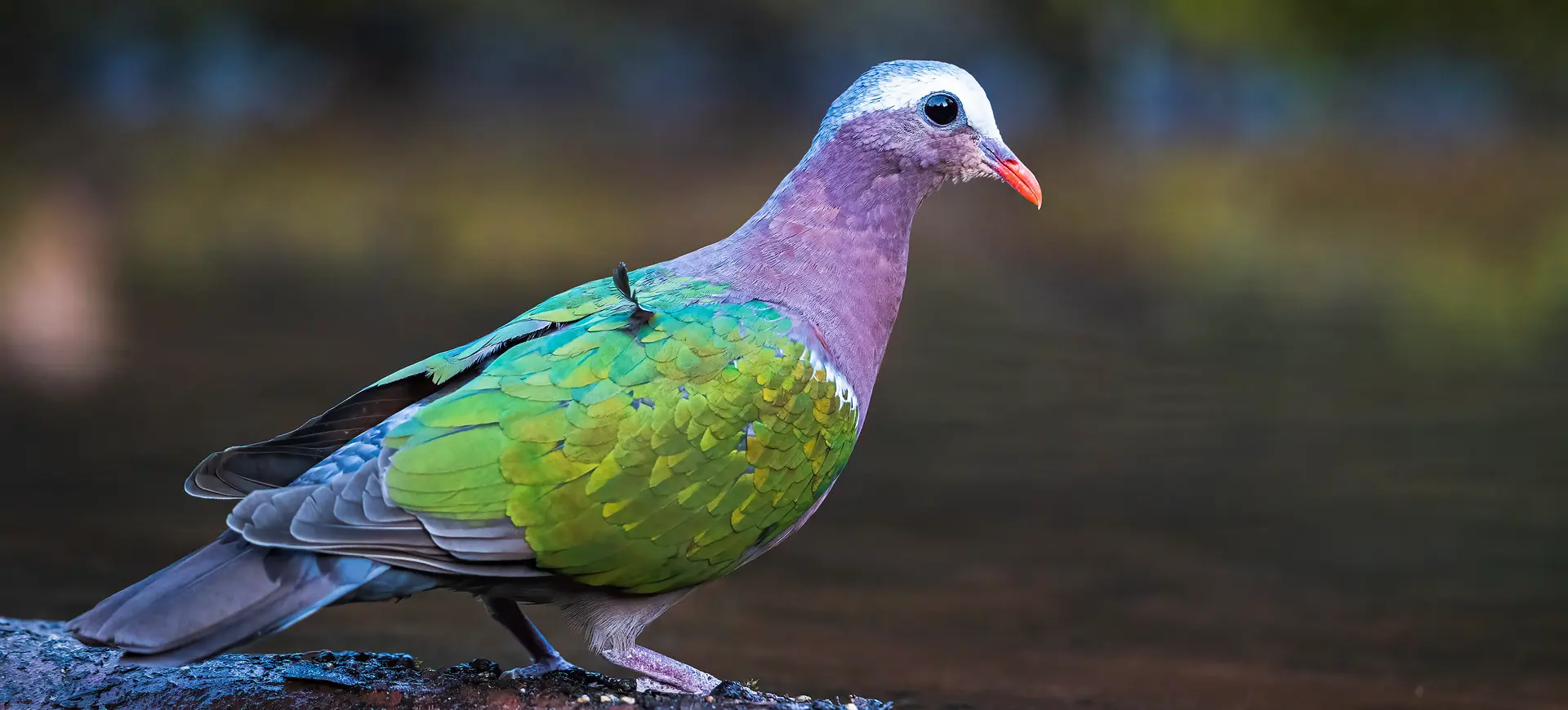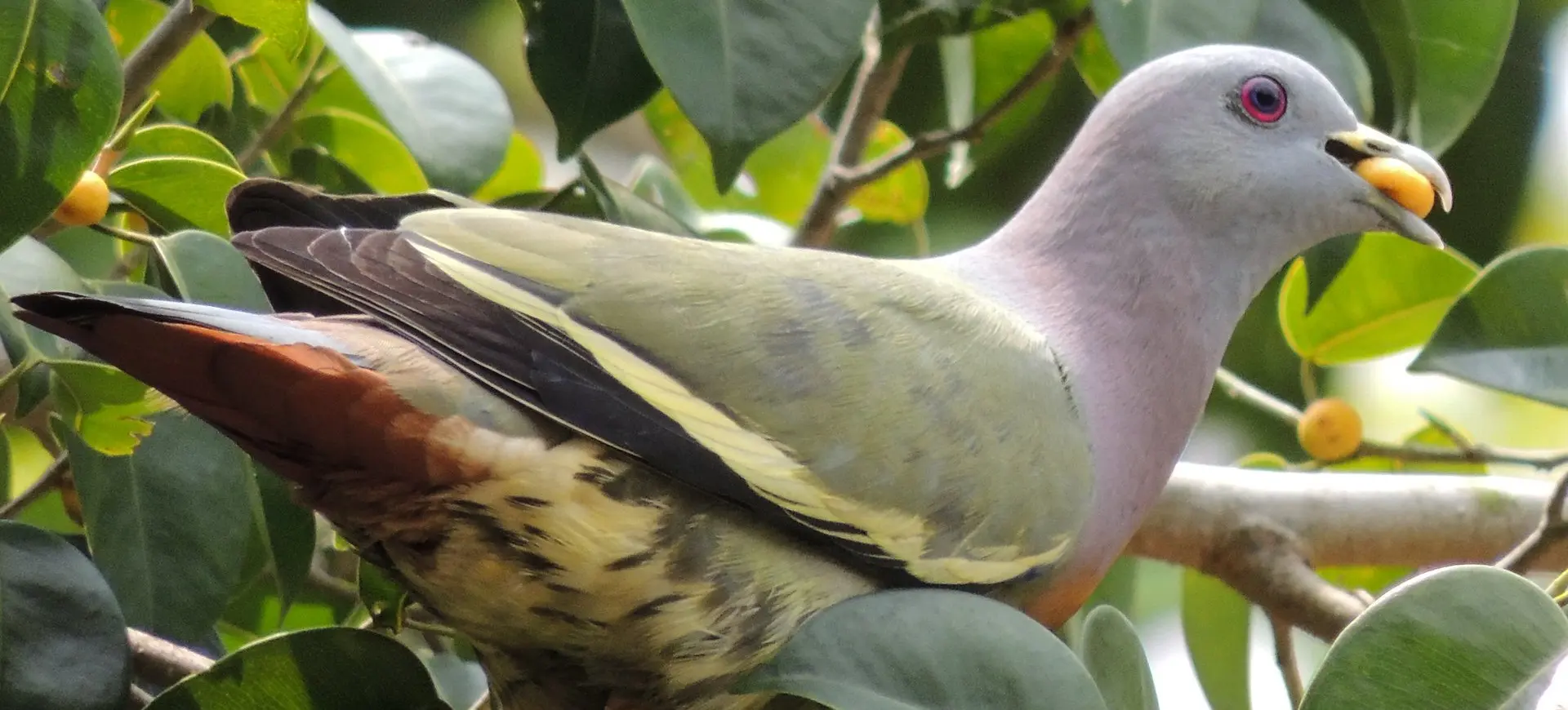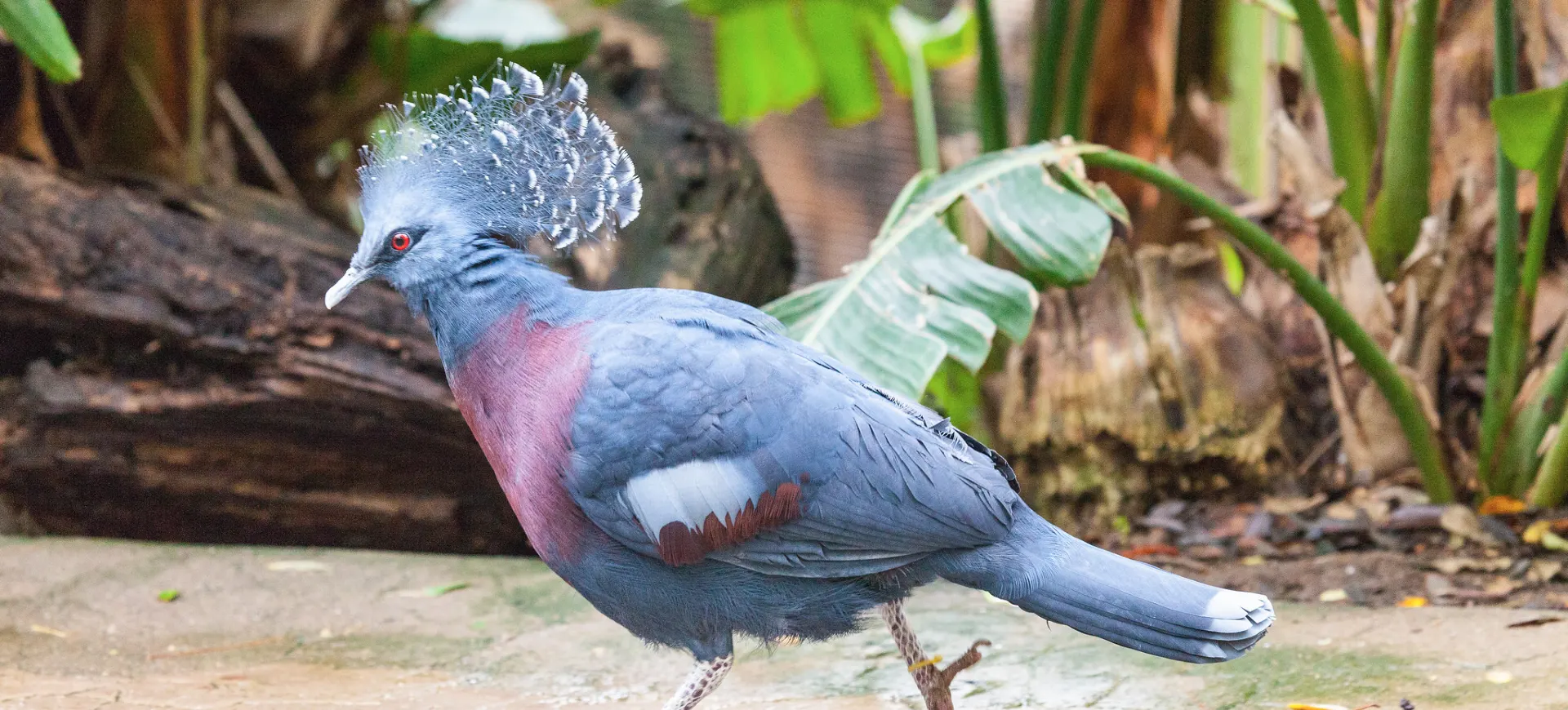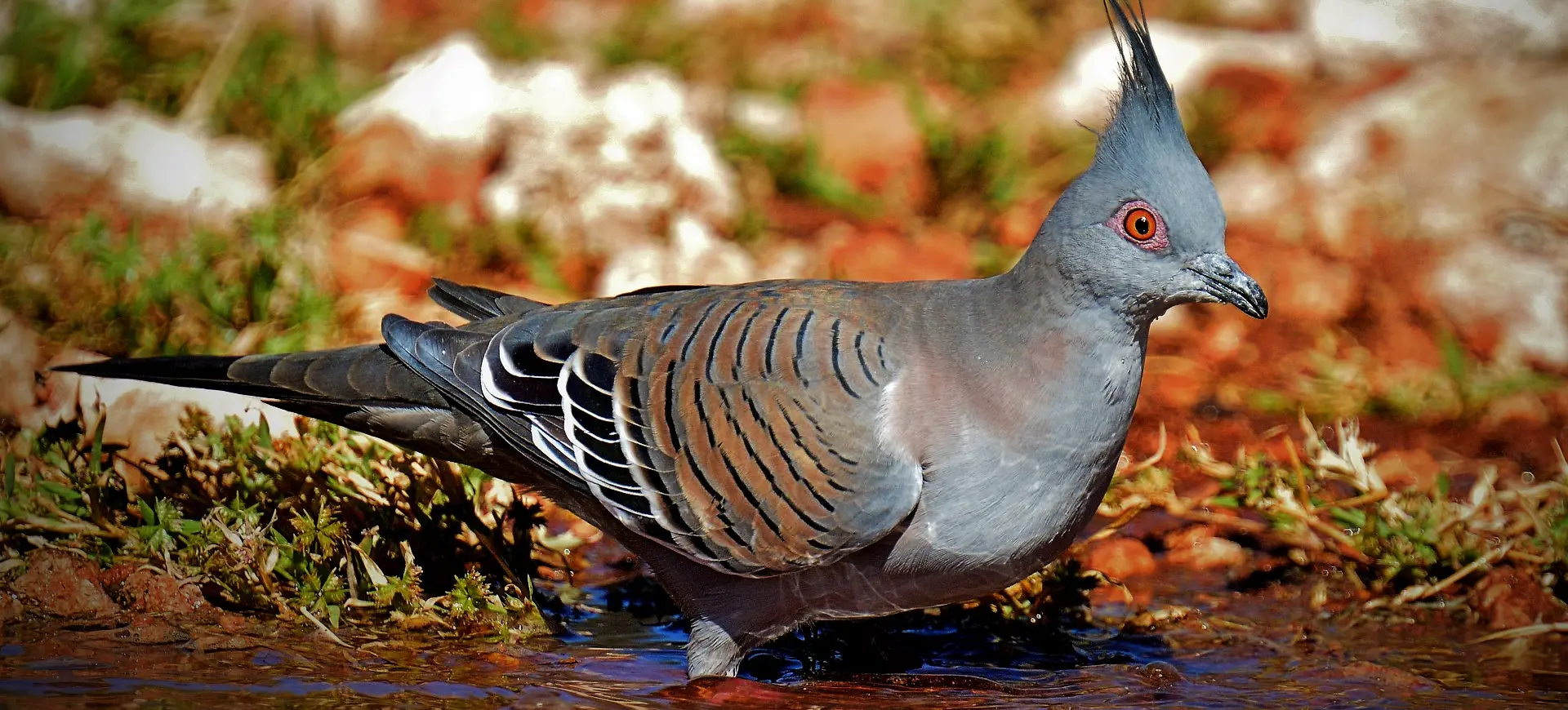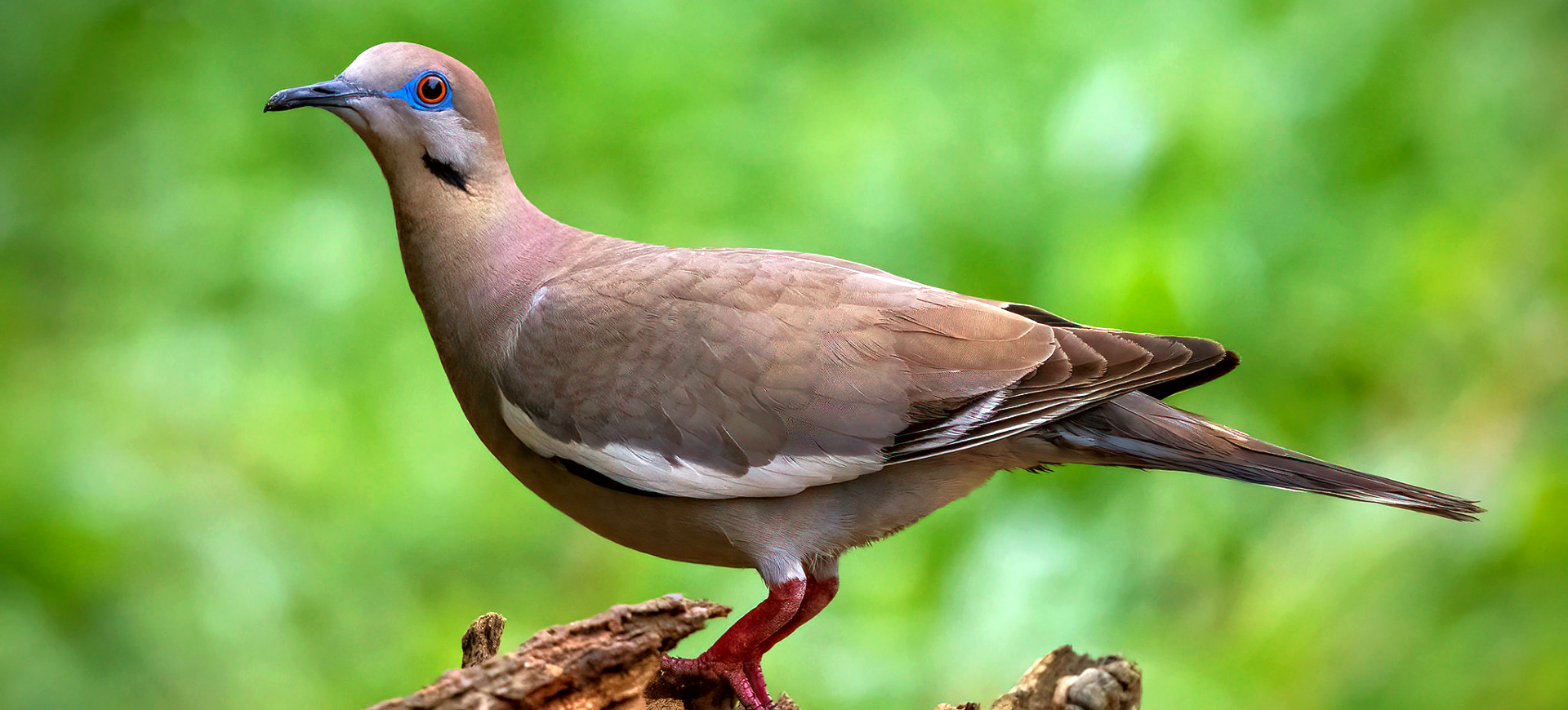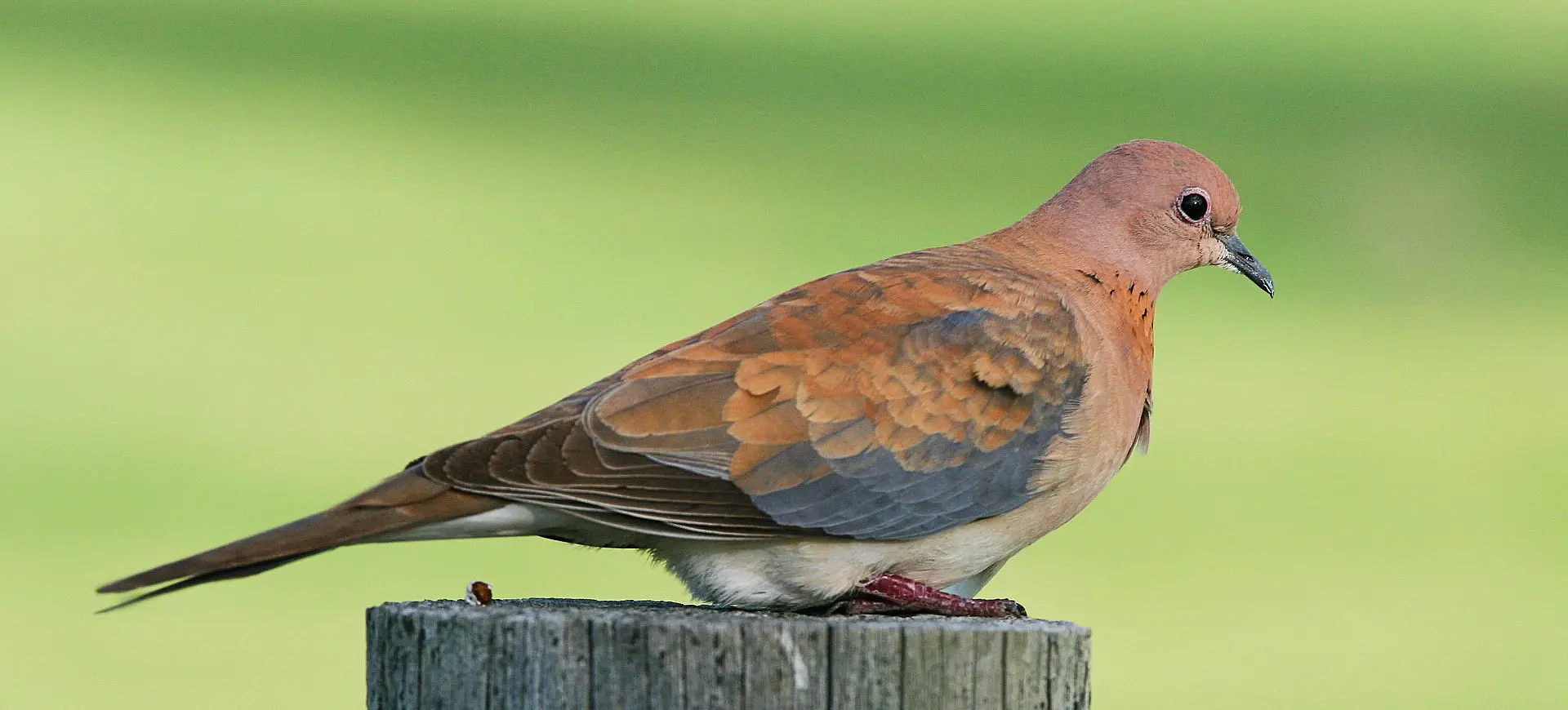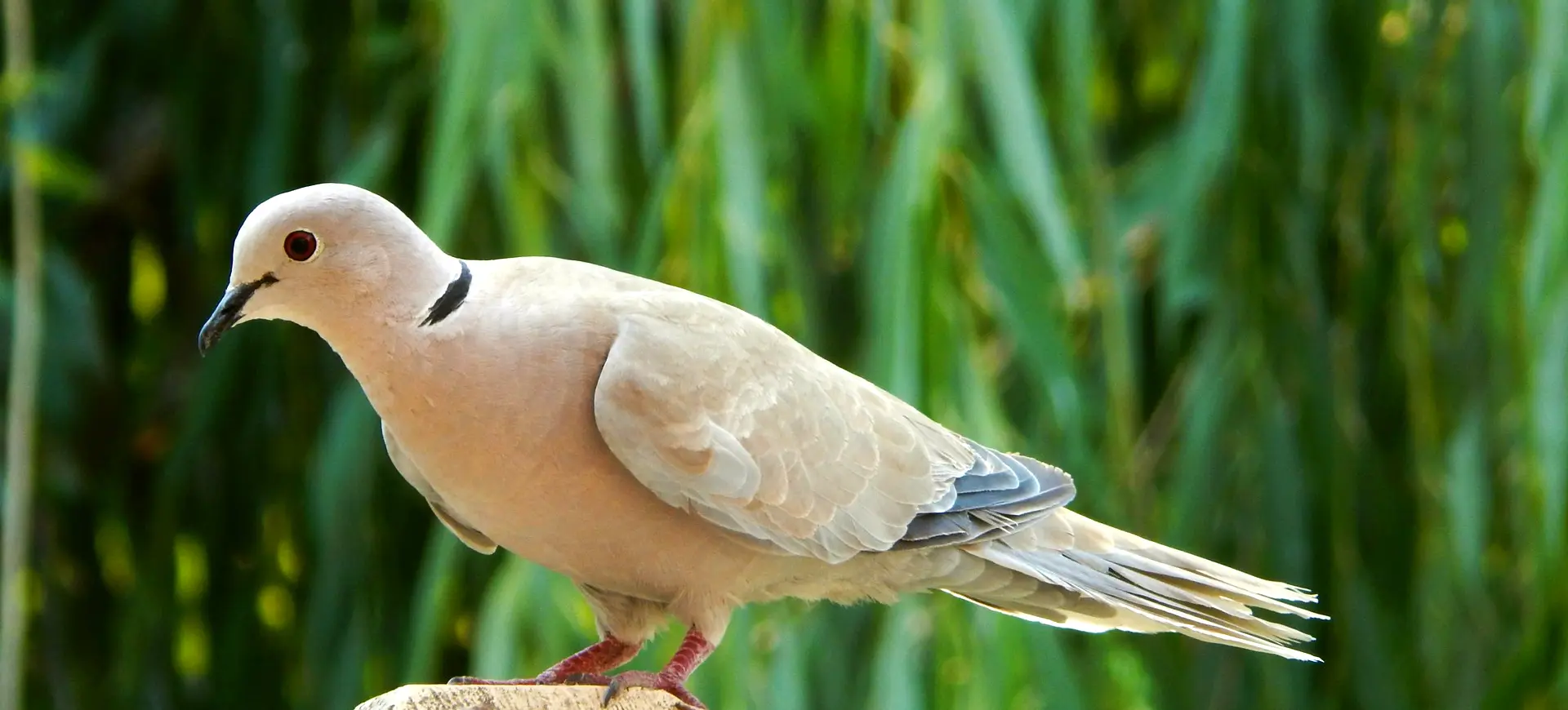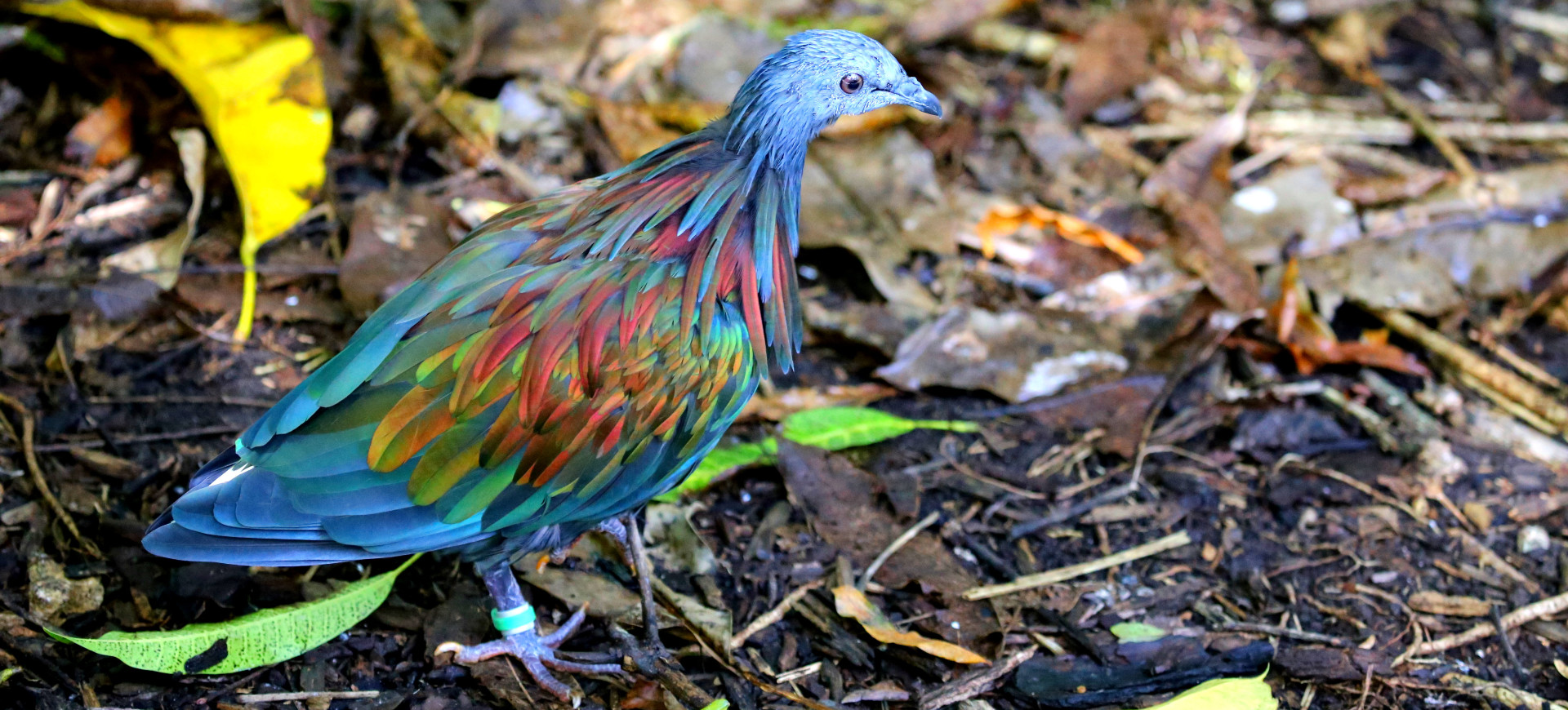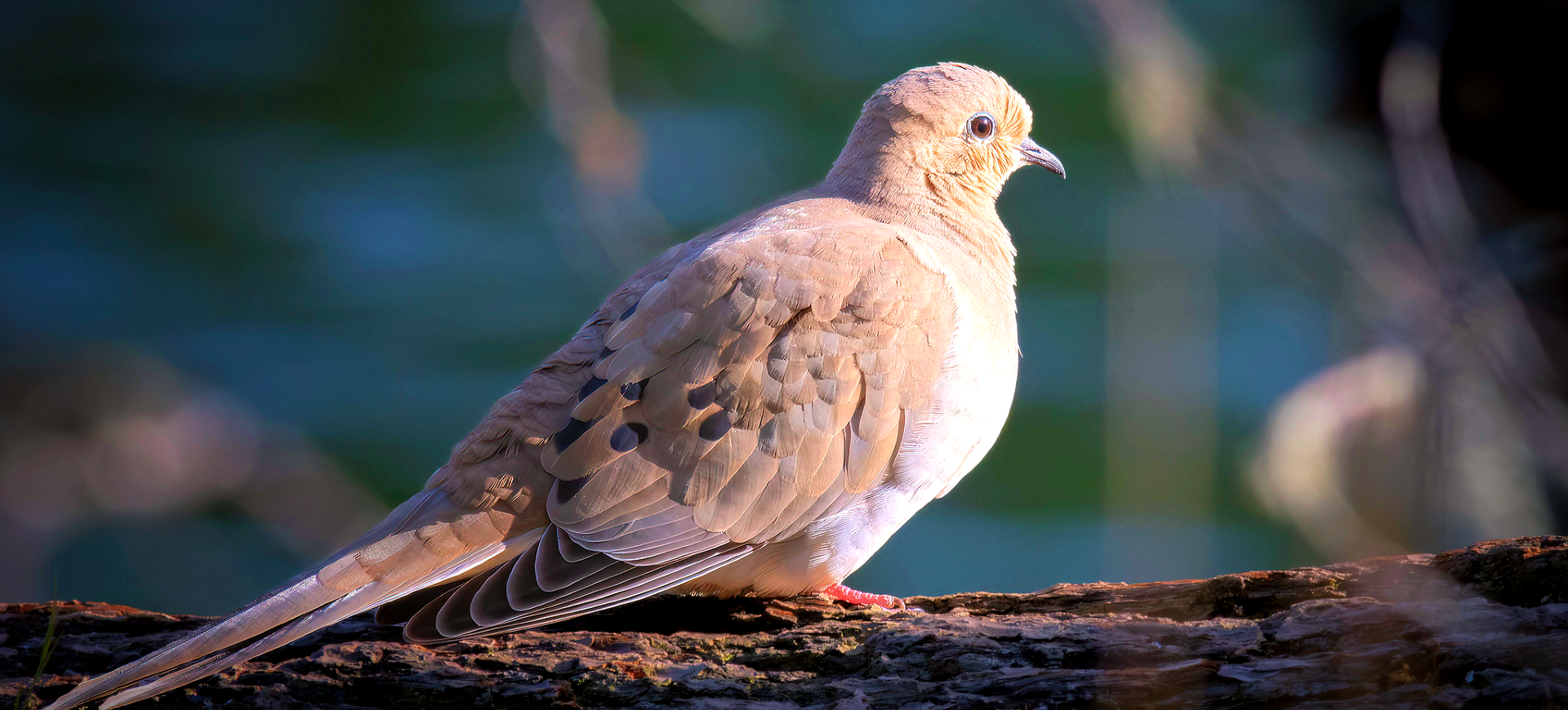Overview
The Green-Naped Pheasant Pigeon (Otidiphaps nobilis) is a distinctive bird species primarily found in the dense tropical forests of New Guinea. Characterized by its vibrant plumage and robust body, this bird resembles a blend between a pigeon and a pheasant, reflected in its name. Its upper body is rich, dark green, while its nape showcases a shimmering green hue, giving it the ‘green-naped’ descriptor. Unlike typical pigeons, the Green-Naped Pheasant Pigeon has a more terrestrial lifestyle, spending much of its time foraging on the forest floor for food, which includes seeds, fallen fruits, and small invertebrates.
These birds are known for their elusive nature, making them a rare sight even within their native habitats. They exhibit strong pair bonds, with pairs often seen foraging together. The Green-Naped Pheasant Pigeon’s call is a distinctive, deep, booming sound that can be heard echoing through the forest, aiding in communication over long distances. Due to their reclusive behavior and preference for dense forest undergrowth, much about their breeding behavior and social structure remains a mystery to ornithologists.
The conservation status of the Green-Naped Pheasant Pigeon is of increasing concern, as their habitats face threats from deforestation and habitat fragmentation. These birds play a crucial role in their ecosystems as seed dispersers, contributing to the health and regeneration of their forest environments. Conservation efforts are essential to protect these unique birds and their habitats, ensuring their survival for future generations. To develop effective conservation strategies, research and conservation initiatives aim to better understand their ecology, behavior, and the specific threats they face.
Taxonomy
Kingdom
Phylum
Class
Order
Family
Genus
Species
Sub Species
Type
Physical Description:
The Green-Naped Pheasant Pigeon boasts a striking appearance, with its most notable feature being the iridescent green nape that contrasts beautifully against its darker, greenish-black plumage. This bird has a large, robust body typical of ground-dwelling birds, with strong, pinkish-red legs well-adapted for its terrestrial lifestyle. Its tail is short and rounded, and the wings are broad, suited for quick, powerful flights over short distances within the forest canopy. The facial area features a distinctive red orbital skin, adding to its unique and colorful appearance.
Juveniles of the species are generally duller in coloration compared to adults, with less pronounced green hues on the nape and a more uniform body color. Sexual dimorphism is minimal in this species, making it challenging to distinguish between males and females based solely on external appearance. The beak of the Green-Naped Pheasant Pigeon is strong and curved, designed for cracking seeds and accessing the pulp of fruits. Their plumage serves as camouflage within the forest floor and plays a role in social signaling and mate attraction.

Lifespan: Wild: ~2 Years || Captivity: ~10 Years

Weight: Male & Female: 1-1.1 lbs (0.45-0.5)

Length: Male & Female: 14-16 inches (37-41 cm)

Height: Male & Female: 15-20 in (38-50 cm)
Characteristic:
Native Habitat:
The Green-Naped Pheasant Pigeon inhabits the dense, tropical rainforests of New Guinea, preferring areas with thick undergrowth and minimal human disturbance. These birds are highly adapted to terrestrial life, although they are capable of short, rapid flights when threatened. Their preferred habitats are characterized by high humidity, ample vegetation cover, and a rich plant and animal species biodiversity. The complexity of the rainforest environment provides food, protection from predators, and opportunities for nesting.
The species’ reliance on dense forest habitats makes them particularly vulnerable to deforestation and habitat degradation. As human activities encroach on these environments, the available space for the Green-Naped Pheasant Pigeon to live and forage is increasingly diminished. Preserving their natural habitats is crucial for their continued survival, highlighting the importance of protected areas and sustainable land management practices. Efforts to study and conserve the habitats of the Green-Naped Pheasant Pigeon are essential for ensuring the species’ future.
Climate Zones:
Biomes:
WWF Biomes:
Biogeographical Realms:
Continents:
Countries:
Diet:
Diet & Feeding Habits:
The Green-Naped Pheasant Pigeon is primarily frugivorous, with a diet that heavily focuses on consuming fallen fruits on the forest floor. In addition to fruits, these birds feed on seeds, small invertebrates, and, occasionally, leafy vegetation, showcasing their omnivorous tendencies. Their foraging behavior is characterized by a systematic search through the leaf litter and undergrowth, using their beaks to turn over debris in search of food. This species plays an important role in their ecosystems as seed dispersers, aiding in the regeneration of their forest habitats.
Their feeding habits and diet composition can vary seasonally, depending on the availability of different fruiting plants and seeds. The Green-Naped Pheasant Pigeon’s ability to adapt its diet based on seasonal changes ensures its survival in the dynamic environments of tropical forests. These birds are often observed foraging in pairs or small family groups, suggesting a social component to their feeding behavior. The diet of the Green-Naped Pheasant Pigeon underscores the importance of preserving their natural habitats, as the availability of their food sources is directly tied to the health of the forest ecosystem.
Mating Behavior:
Mating Description:
Little is known about the specific mating behaviors and reproductive strategies of the Green-Naped Pheasant Pigeon due to their elusive nature and the difficulty of observing them in their dense forest habitats. However, they are believed to form monogamous pair bonds, with pairs staying together throughout the breeding season and possibly beyond. Nesting typically occurs on the ground or in low vegetation, where the female lays a small clutch of eggs, usually one to two. Both parents are thought to participate in the incubation of the eggs and the rearing of the chicks.
The breeding season for the Green-Naped Pheasant Pigeon is not well-defined and may vary depending on geographical location and environmental conditions. The chicks are altricial at birth, meaning they are born relatively undeveloped and require significant parental care and feeding. The chicks’ diet initially consists of regurgitated food from the parents, gradually transitioning to solid food as they grow. Protecting the nesting sites and ensuring the availability of food resources is crucial for successfully reproducing the Green-Naped Pheasant Pigeon.
Reproduction Season:
Birth Type:
Pregnancy Duration:
Female Name:
Male Name:
Baby Name:
Social Structure Description:
The Green-Naped Pheasant Pigeon is believed to be a solitary or pair-living bird, with individuals or pairs maintaining territories within their dense forest habitats. Their social interactions, particularly outside of the breeding season, remain largely unknown due to the difficulty of observing these elusive birds in the wild. During breeding, pairs may exhibit strong bonds, working together to build nests, incubate eggs, and raise their young. The territorial behavior of the Green-Naped Pheasant Pigeon suggests a degree of social organization and communication among individuals, which is essential for maintaining their populations in the complex ecosystems of New Guinea’s rainforests.
Understanding the social structure and behavior of the Green-Naped Pheasant Pigeon is crucial for developing effective conservation strategies. Research into their communication, mating systems, and territory defense mechanisms can provide insights into their ecological needs and challenges. Protecting their populations’ social and ecological integrity requires a comprehensive approach that includes habitat preservation, population monitoring, and the mitigation of threats to their survival.
Groups:
Conservation Status:
Population Trend:
The population size of the Green-Naped Pheasant Pigeon in the wild is difficult to estimate due to their secretive nature and the inaccessibility of their rainforest habitat. They are considered rare throughout their range, with uncommon sightings even in suitable habitats. The lack of comprehensive data on their population trends and distribution has led to their classification as Data Deficient by the IUCN Red List. This status highlights the need for further research and monitoring to better understand their ecology and population dynamics.
Conservation efforts for the Green-Naped Pheasant Pigeon are hampered by the lack of specific information on their numbers and the threats they face. Protecting their rainforest habitats is critical for survival, emphasizing the importance of combating deforestation and habitat fragmentation. Initiatives to study the species more closely and to engage local communities in conservation efforts are key to preserving the Green-Naped Pheasant Pigeon for future generations.
Population Threats:
The primary threats to the Green-Naped Pheasant Pigeon include habitat loss and degradation due to logging, agriculture, and human settlement expansion. Deforestation removes their food sources and nesting sites and fragments their habitats, making it difficult for individuals to find mates and maintain healthy populations. The impact of introduced predators and competition from invasive species can also pose significant challenges to their survival. Climate change is an emerging threat with the potential to alter their habitats and the availability of food resources.
Conservation strategies must address these threats through habitat protection, sustainable land management practices, and the enforcement of laws against illegal logging and land conversion. Raising awareness about the Green-Naped Pheasant Pigeon and its ecological importance can help garner support for conservation measures. Collaborative efforts between conservation organizations, governments, and local communities are essential for developing and implementing effective strategies to protect this unique species and its habitat.
Conservation Efforts:
Conservation initiatives for the Green-Naped Pheasant Pigeon focus on habitat preservation and establishing protected areas within their natural range. Research and monitoring programs are crucial for gathering data on their population size, distribution, and behavior, which can inform conservation strategies and actions. Efforts to restore degraded habitats and reconnect fragmented forest areas can help ensure the species’ long-term survival. Environmental education and community engagement programs are also important for promoting the conservation of the Green-Naped Pheasant Pigeon and its rainforest home.
Collaboration with local communities is key to the success of conservation efforts, as it encourages sustainable practices and reduces human impacts on the species’ habitats. International cooperation and funding can support research, monitoring, and habitat protection initiatives, providing the resources to safeguard the Green-Naped Pheasant Pigeon. Conservation organizations and governments must work together to implement effective policies and actions that address the threats facing this species, ensuring a future for the Green-Naped Pheasant Pigeon and the rich biodiversity of its rainforest habitat.
Additional Resources:
Fun Facts
- The Green-naped Pheasant-Pigeon (Otidiphaps nobilis insularis) is a subspecies of the Noble Pheasant-Pigeon, native to the forests of Papua New Guinea.
- This bird is known for its striking appearance, featuring a metallic green nape contrasting beautifully with its dark plumage.
- Unlike typical pigeons, the Green-naped Pheasant-Pigeon has a more terrestrial lifestyle, spending much of its time on the forest floor searching for food.
- Their diet primarily consists of fruits, seeds, and small invertebrates, making them important seed dispersers in their ecosystem.
- The Green-naped Pheasant-Pigeon is elusive and shy, making it a rare sight even for experienced birdwatchers in its native habitat.
- Its call is a deep, booming sound, which can be heard echoing through the forests, often at dawn and dusk.
- Breeding behavior and nesting habits are not well-documented, reflecting the bird’s secretive nature and the challenging terrain of its habitat.
- The conservation status of the Green-naped Pheasant-Pigeon is not well-defined due to its elusive nature, but habitat loss and hunting pose significant threats.
- The bird’s unique pheasant-like appearance, robust body and long tail distinguishes it from other pigeon species.
- Efforts to study and conserve the Green-naped Pheasant-Pigeon are challenged by the remoteness and inaccessibility of its natural habitat, highlighting the need for targeted conservation strategies.





